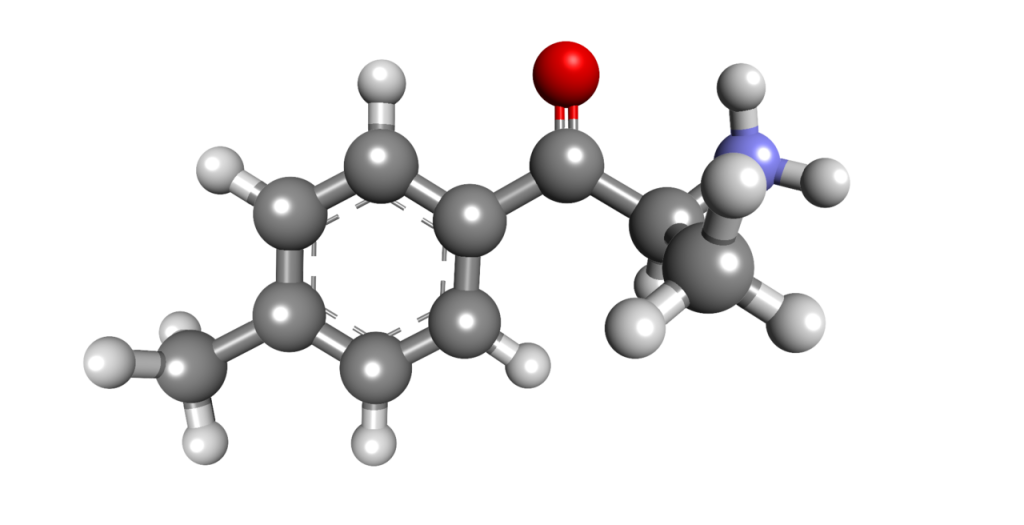Beautiful Plants For Your Interior
Summary
4-Methylcathinone, alternatively recognized as Nor-Mephedrone, 4-MC, and NSC-60487, is a stimulant substance in the cathinone chemical class. This compound has been made available online and is often marketed as a designer drug.
It is important to note that 4-methylcathinone is a metabolite of the more widely known drug mephedrone (4-methylmethcathinone).
4-Methylcathinone exhibits a 2.4-fold selectivity in promoting the release of monoamines through the dopamine transporter (DAT) compared to the serotonin transporter (SERT), in contrast to cathinone, which has a 309-fold selectivity for this effect.
| Identifiers | |
|---|---|
| IUPAC name | |
| CAS Number | 31952-47-3HCl: 6941-17-9 |
|---|---|
| PubChem CID | 414532 |
| ChemSpider | 367058 |
| UNII | CY9HK59OK6 |
| Chemical and physical data | |
| Formula | C10H13NO |
| Molar mass | 163.220 g·mol−1 |

Legal status
| Legal status | |
|---|---|
| Legal status | DE: NpSG (Industrial and scientific use only) UK: Class B |
FAQ
1. What is 4-Methylcathinone?
- 4-Methylcathinone is a synthetic stimulant drug that falls into the cathinone chemical class. It is often marketed and sold online as a designer drug.
2. What are the effects of 4-methylcathinone?
- The effects of 4-methylcathinone may include increased energy, alertness, and sometimes feelings of euphoria. However, individual reactions to the substance can vary.
3. Is 4-Methylcathinone legal?
- The legal status of 4-methylcathinone varies by country and region. It may be classified as a controlled or illegal substance in some places. It’s essential to check local regulations to determine its legal status.
4. What is the relationship between 4-methylcathinone and mephedrone?
- 4-Methylcathinone is a metabolite of mephedrone (4-methylmethcathinone), a better-known drug in the same chemical class. This means that mephedrone is converted into 4-methylcathinone in the body as part of its metabolic process.
5. Are there any street names for 4-methylcathinone?
- Street names for 4-methylcathinone may vary by region and can include nicknames or slang terms used within the illicit drug trade.
6. What are the potential health risks associated with 4-methylcathinone use?
- Using 4-methylcathinone can carry health risks, including an elevated heart rate, anxiety, paranoia, and potential addiction. Due to its relatively recent emergence, long-term effects are not well-documented.
7. Can 4-methylcathinone be detected in drug tests?
- 4-Methylcathinone may be detectable in specific drug tests, particularly in urine screenings. However, its inclusion in standard drug tests may vary, and specialized tests may be required for accurate detection.
8. Is 4-methylcathinone used for any medical purposes?
- 4-Methylcathinone is not approved for any medical use and is primarily encountered as a recreational or illicit substance.
9. What should I do if I suspect someone is using 4-methylcathinone?
- If you suspect someone is using 4-methylcathinone or any other illicit substance, it’s essential to encourage them to seek professional help. Substance abuse can have severe health and social consequences, and early intervention is crucial.
10. Where can I get more information about 4-methylcathinone and its risks?
– For comprehensive information about 4-methylcathinone, its associated risks, and harm reduction strategies, consider consulting local substance abuse resources, addiction treatment centers, or medical professionals specializing in addiction and mental health. Additionally, government health agencies often provide information on substance abuse and its consequences.
References
- “nor-Mephedrone.” Sourced from Cayman Chemical. Accessed on June 27, 2015.
- Meyer MR, Wilhelm J, Peters FT, Maurer HH (June 2010). “Beta-keto amphetamines: Investigation into the Metabolism of the Designer Drug Mephedrone and the Toxicological Detection of Mephedrone, Butylone, and Methylone in Urine Using Gas Chromatography-Mass Spectrometry.” Published in Analytical and Bioanalytical Chemistry. Volume 397, Issue 3, Pages 1225–1233. DOI: 10.1007/s00216-010-3636-5. PMID 20333362. S2CID 21471611.
- Pedersen AJ, Reitzel LA, Johansen SS, Linnet K (June 2013). “In Vitro Metabolism Studies on Mephedrone and Analysis of Forensic Cases.” Published in Drug Testing and Analysis. Volume 5, Issue 6, Pages 430–438. DOI: 10.1002/dta.1369. PMID 22573603.
- Dargan PI, Sedefov R, Gallegos A, Wood DM (July–August 2011). “The Pharmacology and Toxicology of the Synthetic Cathinone Mephedrone (4-Methylmethcathinone).” Published in Drug Testing and Analysis. Volume 3, Issues 7–8, Pages 454–463. DOI: 10.1002/dta.312. PMID 21755604.
- Hutsell BA, Baumann MH, Partilla JS, Banks ML, Vekariya R, Glennon RA, Negus SS (February 2016). “Abuse-Related Neurochemical and Behavioral Effects of Cathinone and 4-Methylcathinone Stereoisomers in Rats.” Published in European Neuropsychopharmacology. Volume 26, Issue 2, Pages 288–297. DOI: 10.1016/j.euroneuro.2015.12.010. PMC 5331761. PMID 26738428.